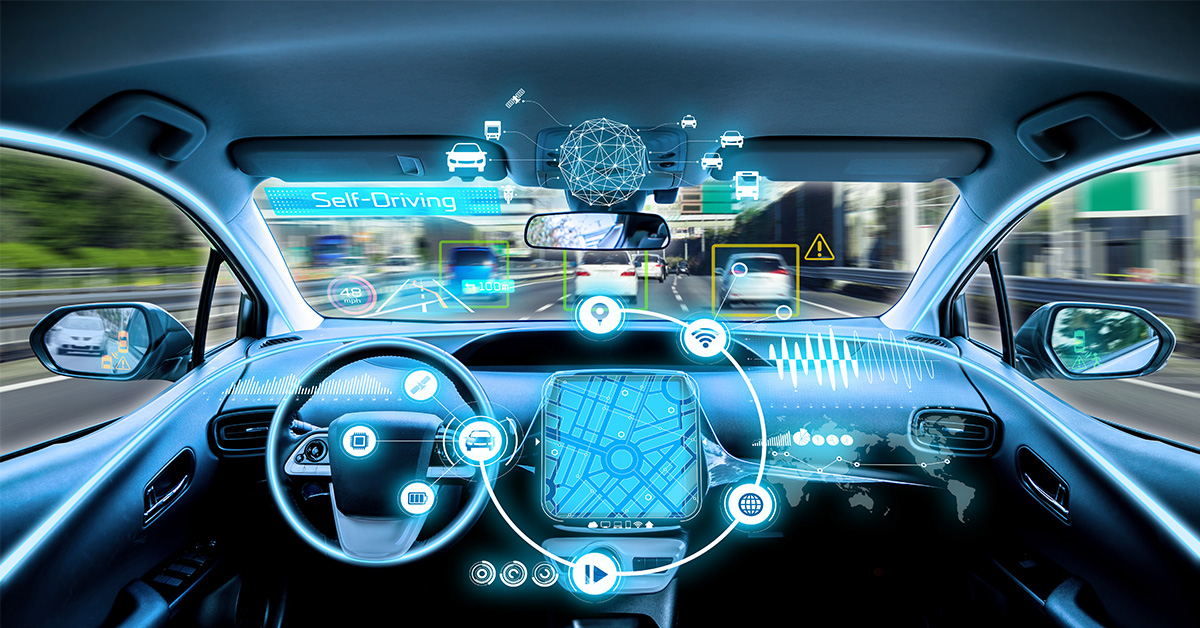The world of automotive infotainment has undergone a transformation that few could have predicted. From the early days of bulky car radios with mechanical dials, featuring only basic audio playback capabilities, the journey toward hi-tech in-car experiences has been revolutionary. However, as technology advanced, these systems became more sophisticated, incorporating touchscreens, navigation, and connectivity options that brought the digital world into our vehicles.
In the wake of the pandemic, the world witnessed a paradigm shift towards touchless technologies, propelling voice commands to the forefront of innovation. The integration of voice assistants into automotives signifies a leap towards the future of driving. These assistants offer the ability to perform a wide range of tasks, from setting navigation to playing music, all with simple voice commands like “Alexa, get directions to Times Square.”
The most compelling advantage of integrating voice assistants into automobiles is the enhancement of safety and convenience. Hands-free operation with voice commands allows drivers to interact with their automotive system without the need to fumble with buttons or touchscreens, which can divert attention from the driving task at hand.
The presence of multiple voice assistants (Alexa, Siri, Cortana, etc.) in the same vehicle presents a unique set of challenges and opportunities. Each assistant has its unique strengths and weaknesses, and they handle tasks differently. Some are better at understanding natural language, while others excel at integrating with certain apps or services. This diversity can be helpful, as it allows users to leverage the best of what each assistant has to offer. However, it also means that there needs to be cooperation and integration between these systems to provide a cohesive user experience.
The key is to harness cross-device synchronization between automotive infotainment systems and personal devices. Whether it is accessing your favorite playlist, sending a text message, or setting a reminder, voice assistance integration ensures that your personal preferences and information are always at your command while driving.
Handoff between devices is particularly important for tasks like navigation. With a seamless handoff, drivers can look up directions on their phone before entering the car, and the automotive voice assistant will access the relevant data upon connection. However, it is also important that the integration of multiple voice assistants does not lead to confusion or a cluttered user interface. The infotainment system should provide a unified experience that feels natural and intuitive to the driver. This continuity is not just about convenience; it is about creating a cohesive digital ecosystem that revolves around the user.
Customization is at the heart of personal technology, and voice assistants in cars should be no exception. Allowing users to choose their preferred voice assistant is essential for a satisfying experience. It is about giving control back to the user and enabling them to tailor the digital environment to their liking. For instance, being able to select which assistant handles specific tasks or setting preferences for how and when an assistant is activated are important. These settings should be easy to access and modify, ensuring that the user is always in control of their digital experience.
The importance of customization also extends to the voices and languages of the assistants. Users should be able to select not only the voice but also the language with which they are comfortable. This level of personalization makes the interaction with voice assistants more enjoyable and natural.
The varied landscape of voice assistants and devices inevitably leads to potential compatibility issues. Ensuring smooth interoperability between different systems is essential for user satisfaction. This is where standardization and open platforms can play a significant role in facilitating communication between disparate systems.
Strategies for ensuring compatibility often involve collaboration between different companies and platforms. It is a complex challenge that requires a shared commitment to creating an open environment where devices and assistants can communicate with one another. This may mean adopting common protocols or working towards shared goals that benefit the industry.
From a practical standpoint, overcoming compatibility challenges also means regular updates and maintenance. Users expect their devices and voice assistants to adapt to new standards and improvements. This requires a proactive approach from manufacturers and developers to ensure that their systems remain compatible with an ever-evolving digital ecosystem.
With the convenience of multiple voice assistants comes the responsibility of ensuring user security and privacy. As these systems become more interconnected, the risk of data breaches or unauthorized access increases. It is imperative that measures are in place to protect user data and ensure secure interactions across devices.
Security considerations involve data encryption, secure authentication methods, and regular security audits. It is important that the communication between devices and voice assistants is protected from vulnerabilities.
Privacy is another significant concern. Voice assistants must be designed with privacy in mind, ensuring that they collect and store only necessary data with the user's consent. Users should have clear options for managing their data and understanding how it is used. It is about creating a balance between functionality and privacy, where users feel confident that their rights are respected.
As the voice assistant technology matures, we can expect to see smarter and more personalized and context-aware systems that anticipate our needs and preferences. This also paves the way for more natural and conversational interfaces, where interacting with a voice assistant is akin to human conversation. Integration trends may also lead to more proactive assistants that offer assistance before the user even realizes its need. This could revolutionize the way we interact with our devices, making our digital experiences more intuitive but less intrusive.
To delve into real-world applications, explore how LTTS partnered with a leading automotive manufacturer to build an Alexa-powered infotainment system.




